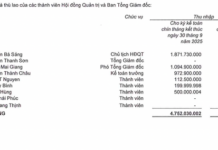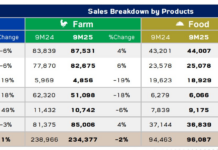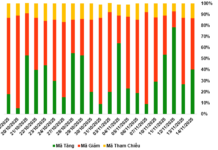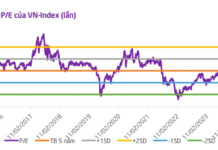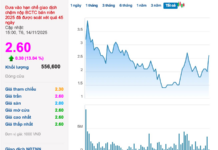
Illustrative photo
Unlike previous years, the USD/VND exchange rate has been under continuous upward pressure in the first months of 2024 and has increased by approximately 3.8% since the beginning of the year. As of the morning of April 16th, the USD selling price at Vietcombank and VietinBank were both listed at the maximum permissible level of 25,348 VND, while at BIDV, it was only 2 VND below the permitted trading ceiling.
The USD selling price at major private banks such as Techombank, MB, ACB, and Eximbank has also increased to the full extent of the fluctuation range, reaching 25,348 VND.
This is the second consecutive session in which the USD exchange rate at a series of major banks has increased to the ceiling. At the same time, the USD selling price of banks is now significantly higher than the USD selling price at the State Bank of Vietnam’s Exchange (25,298 VND).
With banks raising the USD price close to the permissible ceiling and significantly exceeding the selling price at the Exchange, the SBV is likely to take appropriate actions, including the possibility of selling foreign currency intervention.
Earlier, at the regular Government press conference in March 2024, SBV Deputy Governor Dao Minh Tu said that the exchange rate issue was becoming urgent and that the SBV would intervene in the market if necessary.
How much foreign exchange reserves does the SBV hold?
Considered a “buffer” to stabilize the exchange rate, foreign exchange reserves have been continuously increased by the State Bank over the years.
The most recent data released by the SBV shows that the State’s foreign exchange reserves reached over 109.9 billion USD at the end of 2021, ten times the foreign exchange reserves recorded in 2010 and almost four times that of 2015.
However, after reaching a record high in the first quarter of 2022, foreign exchange reserves declined sharply in 2022 as the SBV had to sell a large amount of foreign currency to stabilize the exchange rate. According to estimates by VnDirect Securities and some domestic analysis units, the SBV sold approximately 20% of its foreign exchange reserves, down to about 89 billion USD at the end of 2022.
On the other hand, according to data from the International Monetary Fund (IMF), Vietnam’s foreign exchange reserves at the end of 2022 stood at 86.7 billion USD. This figure represents a decrease of approximately 22.7 billion USD compared to the end of 2021.
After selling a large amount of foreign currency to stabilize the exchange rate, the SBV started buying foreign currency again from the beginning of 2023 as the domestic exchange rate reversed its decline. At the regular Government meeting on May 5, 2023, Governor Nguyen Thi Hong said that the agency had bought about 6 billion USD since the beginning of 2023.
Estimated based on data from domestic and IMF analysis units and the amount of foreign currency that the SBV bought in early 2023, Vietnam’s foreign exchange reserves as of early May 2023 could reach approximately 93 – 95 billion USD. Since then, the SBV has not provided any further information on the amount of foreign currency bought and sold.
According to CEIC Data (a reliable data source worldwide), Vietnam’s foreign exchange reserves excluding gold as of September 2023 were 87.6 billion USD. If gold is included, Vietnam’s foreign exchange reserves reached nearly 90.1 billion USD at the end of the third quarter of 2023.
Meanwhile, the credit rating agency Moody’s had forecasted that Vietnam’s foreign exchange reserves, excluding gold, could reach 95 billion USD by the end of 2023, as the State Bank actively rebuilds its reserves.
In a press release issued on September 27, 2023, the IMF estimated that Vietnam’s foreign exchange reserves would increase to 98.7 billion USD by the end of 2023 and 110.5 billion USD by the end of 2024.













